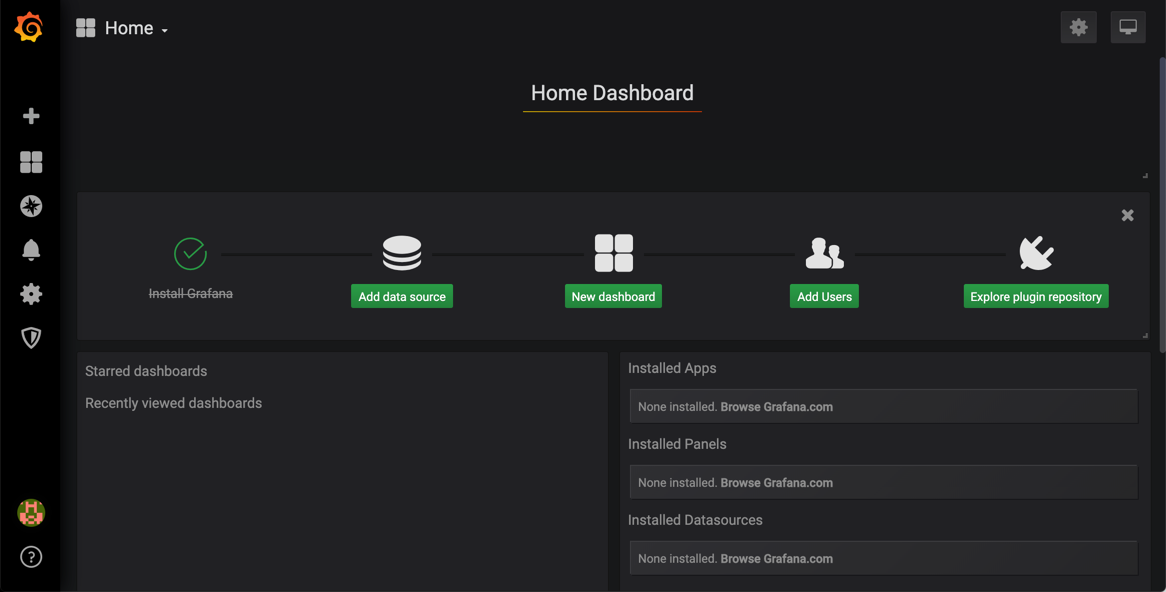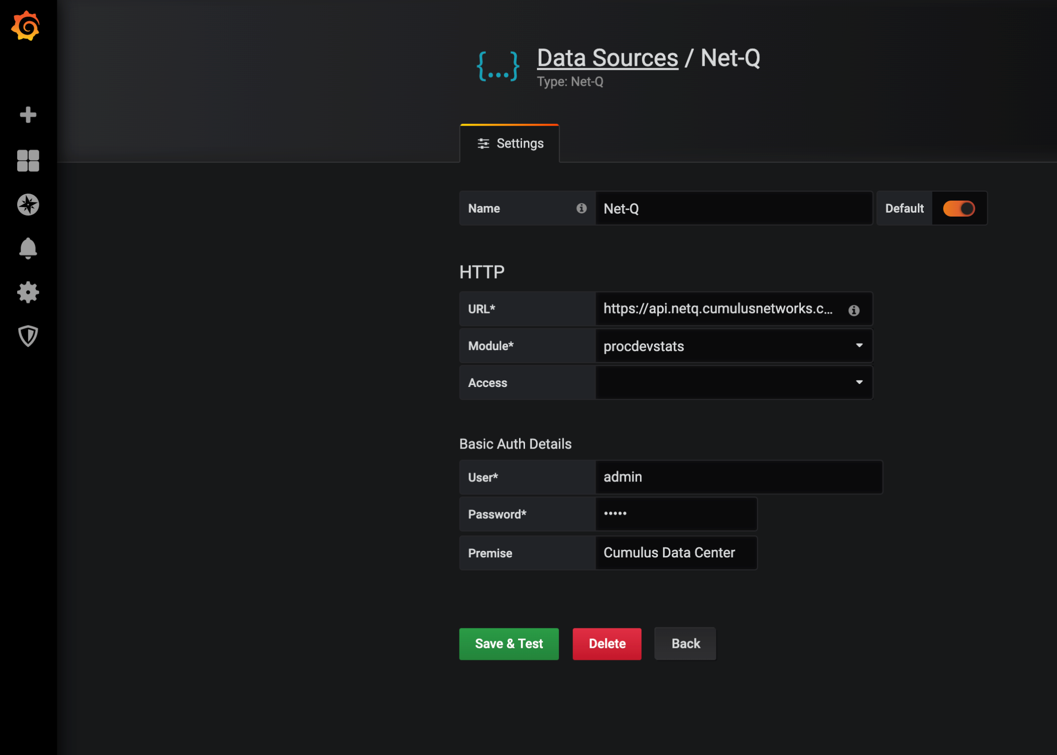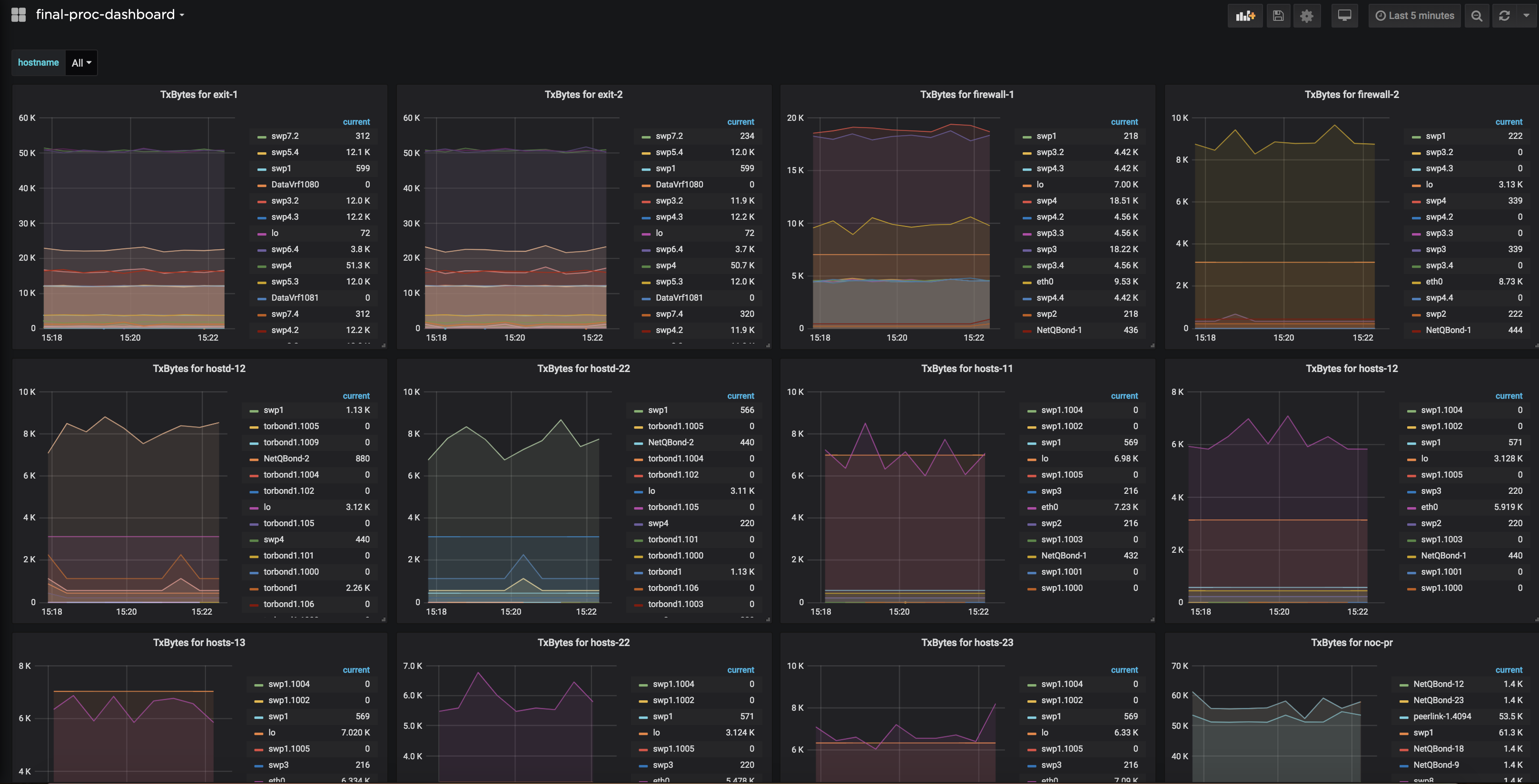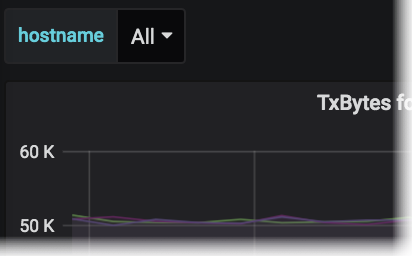Integrate NetQ with Grafana
Switches collect statistics about the performance of their interfaces. The NetQ Agent on each switch collects these statistics every 15 seconds and then sends them to your NetQ Appliance or Virtual Machine.
NetQ collects statistics for physical interfaces; it does not collect statistics for virtual interfaces, such as bonds, bridges, and VXLANs. NetQ collects these statistics from two data sources: Net-Q and Net-Q-Ethtool.
Net-Q displays:
- Transmit with tx_ prefix: bytes, carrier, colls, drop, errs, packets
- Receive with rx_ prefix: bytes, drop, errs, frame, multicast, packets
Net-Q-Ethtool displays:
- Hardware Transmit with hw_if_out_ prefix: octets, ucast_pckts, mcast_pkts, bcast_pkts, discards, errors, q_drops, non_q_drops, q_len, pause_pkt, pfc[0-7]_pkt, wred_drops, q[0-9]_wred_drops
- Hardware Receive with hw_if_in_ prefix: octets, ucast_pckts, mcast_pkts, bcast_pkts, discards, l3_drops, buffer_drops, acl_drops, errors, dot3_length_errors, dot3_frame_errors, pause_pkt, pfc[0-7]_pkt
- Software Transmit with soft_out_ prefix: errors, drops, tx_fifo_full
- Software Receive with soft_in_ prefix: errors, frame_errors, drops
You can use Grafana version 6.x, an open source analytics and monitoring tool, to view these statistics. The fastest way to achieve this is by installing Grafana on an application server or locally per user, and then installing the NetQ plugin containing the prepared NetQ dashboard.
If you do not have Grafana installed already, refer to grafana.com for instructions on installing and configuring the Grafana tool.
Install NetQ Plugin for Grafana
Use the Grafana CLI to install the NetQ plugin. For more detail about this command, refer to the Grafana CLI documentation.
grafana-cli --pluginUrl https://netq-grafana-dsrc.s3-us-west-2.amazonaws.com/dist.zip plugins install netq-dashboard
installing netq-dashboard @
from: https://netq-grafana-dsrc.s3-us-west-2.amazonaws.com/dist.zip
into: /usr/local/var/lib/grafana/plugins
✔ Installed netq-dashboard successfully
Restart grafana after installing plugins . <service grafana-server restart>
Set Up the Pre-configured NetQ Dashboard
The quickest way to view the interface statistics for your Cumulus Linux network is to make use of the pre-configured dashboard installed with the plugin. Once you are familiar with that dashboard, you can create new dashboards or add new panels to the NetQ dashboard.
-
Open the Grafana user interface.
-
Log in using your application credentials.

The Home Dashboard appears.

-
Click Add data source or
 > Data Sources.
> Data Sources. -
Enter Net-Q or Net-Q-Ethtool in the search box. Alternately, scroll down to the Other category, and select one of these sources from there.

-
Enter Net-Q or Net-Q-Ethtool into the Name field.
-
Enter the URL used to access the database:
- Cloud: api.netq.cumulusnetworks.com
- On-premises: <hostname-or-ipaddr-of-netq-appl-or-vm>/api
- Cumulus in the Cloud (CITC): air.netq.cumulusnetworks.com
-
Select which statistics you want to view from the Module dropdown; either procdevstats or ethtool.
-
Enter your credentials (the ones used to login).
-
For NetQ cloud deployments only, if you have more than one premises configured, you can select the premises you want to view, as follows:
-
If you leave the Premises field blank, the first premises name is selected by default
-
If you enter a premises name, that premises is selected for viewing
Note: If multiple premises are configured with the same name, then the first premises of that name is selected for viewing
-
-
Click Save & Test.

-
Go to analyzing your data.
Create a Custom Dashboard
You can create a dashboard with only the statistics of interest to you.
To create your own dashboard:
-
Click
 to open a blank dashboard.
to open a blank dashboard. -
Click
 (Dashboard Settings) at the top of the dashboard.
(Dashboard Settings) at the top of the dashboard. -
Click Variables.

-
Enter hostname into the Name field.
-
Enter Hostname into the Label field.
-
Select Net-Q or Net-Q-Ethtool from the Data source list.
-
Enter hostname into the Query field.
-
Click Add.
You should see a preview at the bottom of the hostname values.
-
Click
 to return to the new dashboard.
to return to the new dashboard. -
Click Add Query.

-
Select Net-Q or Net-Q-Ethtool from the Query source list.
-
Select the interface statistic you want to view from the Metric list.
-
Click the General icon.

-
Select hostname from the Repeat list.
-
Set any other parameters around how to display the data.
-
Return to the dashboard.
-
Add additional panels with other metrics to complete your dashboard.
Analyze the Data
Once you have your dashboard configured, you can start analyzing the data:
-
Select the hostname from the variable list at the top left of the charts to see the statistics for that switch or host.

-
Review the statistics, looking for peaks and valleys, unusual patterns, and so forth.
-
Explore the data more by modifying the data view in one of several ways using the dashboard tool set:

- Select a different time period for the data by clicking the forward or back arrows. The default time range is dependent on the width of your browser window.
- Zoom in on the dashboard by clicking the magnifying glass.
- Manually refresh the dashboard data, or set an automatic refresh rate for the dashboard from the down arrow.
- Add a new variable by clicking the cog wheel, then selecting Variables
- Add additional panels
- Click any chart title to edit or remove it from the dashboard
- Rename the dashboard by clicking the cog wheel and entering the new name